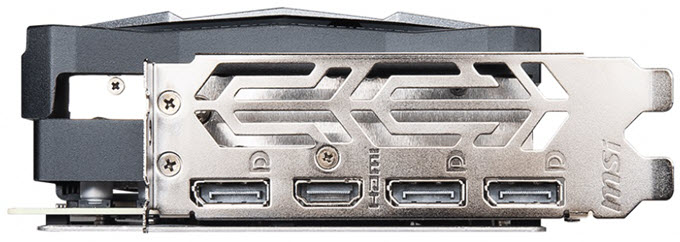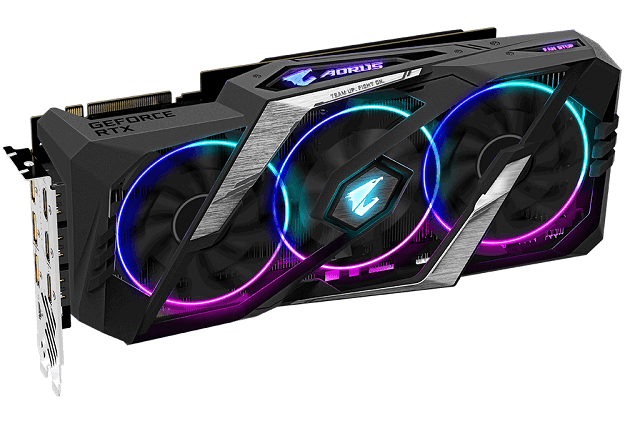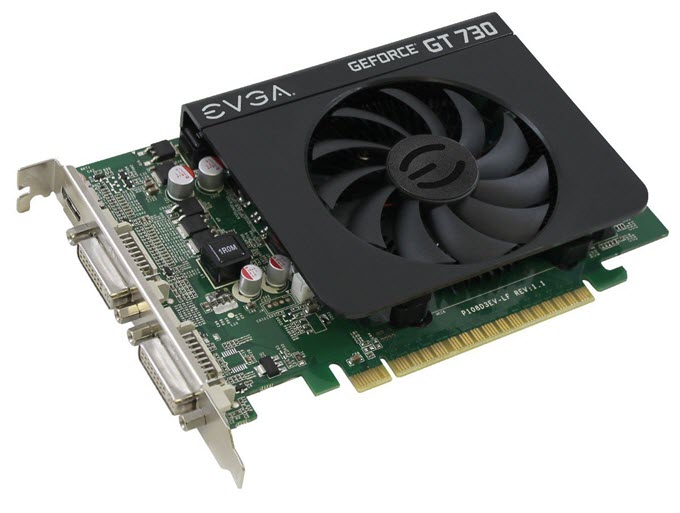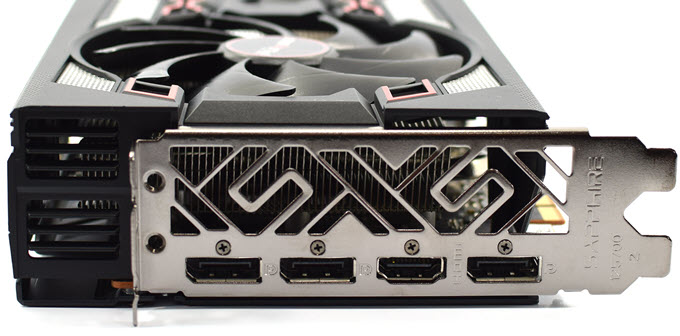3 Slot Graphics Cards
Getting a new GPU and simply plugging it in can work, but if you don’t make sure that your system is compatible, you can seriously endanger it. Why take such an unnecessary risk when checking the graphics card compatibility is so simple?
It does come with a 500W built-in power supply and a PCIe (x16) slot. But, it doesn’t come with a graphics card despite it coming in at just under $500. When you consider the high upfront cost of the Core V2 itself, you’re looking at a $1,000+ investment in order to get a high-end graphics card to go inside of it. GIGABYTE GeForce GTX 1660 Ti GAMING OC 6G Graphics Card, 3 x WINDFORCE Fans, 6GB 192-Bit GDDR6, GV-N166TGAMING OC-6GD Video Card Core Clock: 1860 MHz Max Resolution: 7680 x 4320 @ 60 Hz. GIGABYTE Radeon RX 580 GAMING 8G (rev. 2.0) Graphics Card, PCIe 3.0, 8GB 256-Bit GDDR5, GV-RX580GAMING-8GD REV2.0 Video Card. Core Clock: OC mode: up to 1355 MHz Gaming mode: up to 1340 MHz Max Resolution: 7680 x 4320 DisplayPort: 3 x DisplayPort 1.4 HDMI: 1 x HDMI 2.0b Model #: GV-RX580GAMING-8GDV2 Return Policy: View Return Policy $489.99 –. The RTX 2060 is the best graphics card for 1440p gaming, and arguably the best mid-range graphics card (so, the best for most gamers). Its excellent performance in 1440p and VR allow for demonstrably higher-fidelity experiences than consoles can offer, and with the right settings adjustments, you can push this card to 1800p and 4K gaming.
The good news is: most modern GPUs are compatible with almost any motherboard from the last decade. Still, it’s better to be safe than sorry.
Let’s get the obvious out of the way – you only need to check for graphics card compatibility if you’re getting a dedicated GPU. If you’re planning to game on your integratedgraphicscard (which is possible and actually decent with newer technology), that means that it’s already compatible.
PCIe x16 Slot Is The Key
This brilliant technology is the reason why most modern graphics cards will fit into most motherboards.
PCIe x16 slots come with different numbered suffixes and you’re probably wondering what the difference is. The truth is, as far as compatibility goes, there isn’t much difference at all.
For example, a PCIe 3.0 can run PCIe 1.0 cards and vice versa, although if you run a modern GPU on an older slot you’ll experience bandwidth limitations. The general practice has been that every new version doubles the previous version’s performance. So, if PCIe 2.0 has 4 GT/s (Giga transfers per second), PCIe 3.0 has 8 and so on.
Right now, in 2021, 3.0 is probably the most widely used slot, but 4.0 is gaining steam. The recently released RTX 3080 can be used both with PCI Express 3.0 and 4.0, with only marginal differences in favor of 4.0. There’s even a PCIe 5.0 version in production, and supposedly 6.0 is in the testing stage.
Overall, it’s best to have a motherboard with a free slot with a matching slot to the GPU you’re planning to get. You can still get by with a different version, but you’re either going to be bandwidth limited or not fully access the potential of the slot.

Another key thing is that you need a free slot, especially if you’re planning to set up multiple GPUs either via Nvidia’s SLI or NVLink, or AMD’s Crossfire. You won’t be able to do this if you only have one PCIe x16 slot, although there are solutions out there for those engineeringly inclined.
Make Sure You Have Enough Physical Room For Your New GPU

This is a quirk that’s so easily forgotten, but that can really mess with graphics card compatibility. Make sure to know the specifications of your case as you can easily check the dimensions of the graphics card since they’re usually readily available on the manufacturer’s website.
If push comes to shove and you either forget the type of case you have or you can’t identify it, you can always manually measure the inside of the case with a tape measure. Just make sure the PC is turned off when you’re doing this. It’s not the most recommended method, but it serves its purpose as a last resource.
Most of the time, you’ll want to focus on the length of the graphics card as that’s usually the main issue. It’s good to know the width as well, since it’s possible that it might interfere with other components in your PC. Another thing to consider is the backplate slots as they can give a false impression due to sometimes being wider than the GPU.
While graphics card compatibility is important, it’s equally important to make sure that all the extra cables for the GPU and other nearby components have enough room and won’t be bent.
Measuring the space in your PC is also important to determine if your rig will have enough room to breathe. Proper airflow is the key to keeping your PC at the optimal temperature and the GPU is probably the biggest heat generator inside the case, so you want to be extra careful and make sure that air can flow freely around it and provide proper cooling.
Otherwise, you’ll notice the problem only after you’ve played some games on it and begun noticing stutters or even crashes.
Power Supply Unit (PSU)
This is probably the most important thing to check. A PCIe x16 slot will likely exist on your motherboard and even if there’s not enough room in your case, you can get an upgrade for a reasonable price. A PSU isn’t hugely more expensive, but it needs enough power and proper connectors for the GPU you intend to purchase.
Depending on the GPU you want to buy, you’ll have to know if it needs a 6-pin, 8-pin, or if it doesn’t require a power connector at all. This is because, in most cases, the more power a GPU needs, the bigger the connector will need to be.
For example, a powerhouse like RTX 3080 will sometimes require three 8-pin connectors, while a last-gen budget option like GTX 1050 Ti will require none whatsoever.
This means that if you’re looking to get the latest GPU, you need to have a modern PSU as well since a lot of older ones (pre-2015) won’t even have a single 8-pin connector, let alone three. Power connector adapters can fix this, but they don’t exactly have the best reputation.
As far as required PSU capacity is concerned, a good rule of thumb is: the amount of power your GPU uses should be at most half of your PSU’s total power. Ideally, you’d want your graphics card to be at around 40% of your PSU’s capacity.

This is important because a GPU will suck more power when under heavy loads, like playing a heavy-duty AAA title or rendering a high-resolution video. Because consumption can increase in these situations, it’s important to have the correct amount of headroom from your PSU.
A PSA on the PSUs: even though there are manufacturers who market their units at insane numbers like 2000W, don’t fall for this marketing trick. That’s often a theoretical burst. Our advice is to consider the options from reputable PSU makers and take the power rating into account.
Related:Best PC Power Supply Calculators
Don’t Create Bottlenecks
If you’re getting a brand new, top-of-the-line graphics card while the rest of your PC components are old, some bottlenecking issues are bound to surface. Usually, this bottleneck will come from the CPU, but also RAM memory or the hard drive.
That doesn’t mean you won’t be able to install the GPU and run the latest games, but you’re probably going to run into some stuttering issues. Worst case scenario, you won’t be able to reach the potential FPS that your new GPU can produce.
Display Ports
Although this is a smaller issue, it’s still annoying to forget about your monitor’s port. Some GPUs will offer the ability to use an HDMI, DisplayPort, or DVI, but some cards don’t provide that luxury.
You can still get around this issue by purchasing an adapter. This will likely work perfectly, but there’s a group of people online who’ve reported issues such as input lag and lowered frame rate.
Related:HDMI vs DisplayPort vs DVI vs VGA vs USB-C – Which To Use?
You Might Like These Too
- Boost Thunderbolt™ 3 laptops
- Windows 10 and macOS support
- Compatible with PCI-Express graphics cards
- Up to 700W power supply
- Aluminum chassis

Gpu Height
- Razer Core X
Thunderbolt™ 3 (connection to the system)
Razer Core X Chroma™
• Thunderbolt™ 3 (connection to the system)
• 4 X USB 3.1 Type-A
• Gigabit Ethernet
- Razer Core X
650 Watts
Razer Core X Chroma™
700 Watts
- Up to 100 Watts via USB-C
Pcie Slot Height
- Razer Core X
19.67”/ 500mm
Razer Core X Chroma™
27.56”/ 700mm
- 6.61' / 168 mm (Width) x 14.72' / 374 mm (Depth) x 9.06' / 230 mm (Height)
- Razer Core X
6.48 kg / 14.29 lbs.
Razer Core X Chroma™
6.91 kg / 15.23 lbs.
Pci Slot Width
- Connection to system
Systems require a Thunderbolt™ 3 port with external graphics support. Please check with your laptop manufacture to confirm if your laptop supports Thunderbolt 3 external graphics.
Please also ensure your laptop has the latest BIOS, firmware, Thunderbolt software, and other applicable updates before connecting to Razer Core X Chroma.
macOS Systems Requirements
• Thunderbolt™ 3 equipped Macs running macOS High Sierra 10.13.4 or later.
• Compatible AMD graphics card sold separately.
• Razer Synapse 3 software not available on macOS.
Windows System Requirements
• Windows 10 64bit RS5 or above with Thunderbolt™ 3 port.
• Compatible NVIDIA or AMD graphics card sold separately.
3 Slot Graphics Card
Graphics Cards Requirements (Graphics card not included)
Length : 12.99”/ 330 mm
Height*: 6.29” / 160 mm
Width : 2.36” / 60 mm
Length : 12.99”/ 330 mm
Height*: 6.29” / 160 mm
Width : 2.24” / 57 mm
GPU Type
Up to 3-Slot wide, full-length, PCI-Express x16 graphics card.
Graphics cards use varied designs based around a common graphics chip. Please ensure the GPU selected meets all size, power, and additional requirements.
GPU Max Power Support
500 Watts
- Radeon ™ RX 5000 Series
Radeon ™ RX Vega Series
Radeon ™ RX 500 Series
Radeon ™ R9 Series
Radeon ™ Pro Series
Graphics Card Slot Size
- Qualified NVIDIA® graphics chipsets
Geforce™ RTX 30 Series
GeForce™ Titan RTX Series
Geforce™ RTX 20 Series
GeForce™ Titan GTX Series
Geforce™ GTX 16 Series
Geforce™ GTX 10 Series
Geforce™ GTX 980 Ti – GTX 750
Quadro® RTX Series
Quadro® P Series
Qualified AMD graphics chipsets
Radeon ™ RX 5000 Series
Radeon ™ RX Vega Series
Radeon ™ RX 500 Series
Radeon ™ R9 Series
Radeon ™ Pro Series